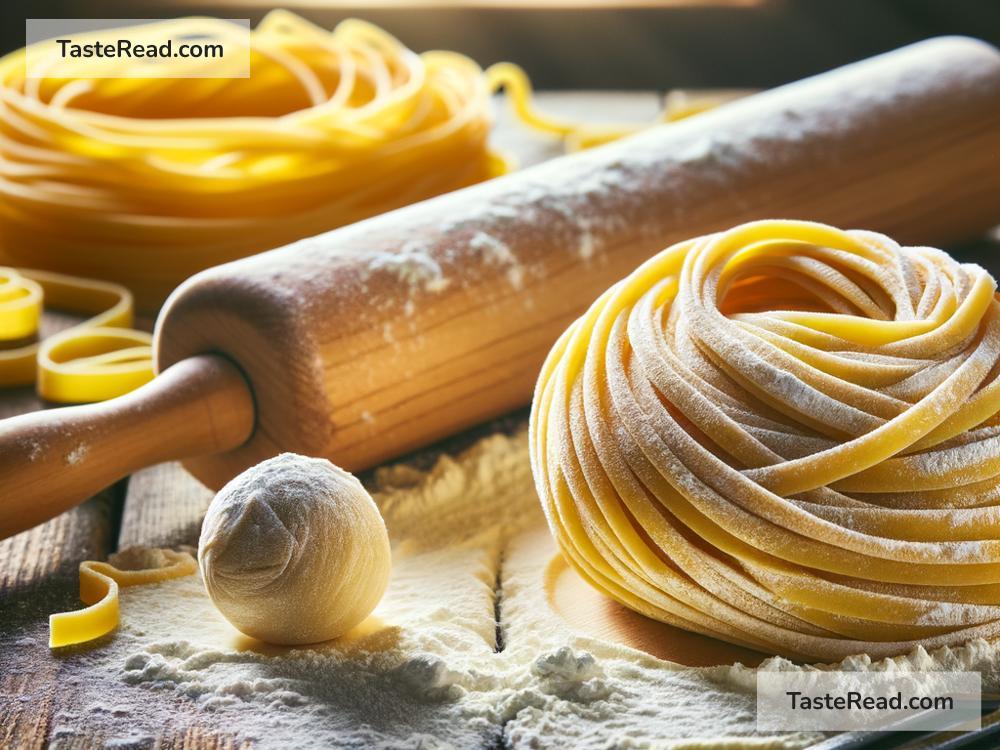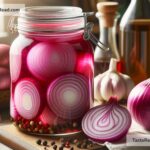How to Prepare Homemade Pasta Dough in Simple English
Who doesn’t love freshly made pasta? It’s delicious, soft, and has a texture that store-bought pasta simply can’t match. Most people think making pasta dough at home is difficult, but the truth is, it’s easier than you might imagine! With just a few basic ingredients, you can create high-quality pasta that will impress your family and friends. Let’s walk through step-by-step how to prepare homemade pasta dough using simple English. Whether you’re a beginner or an experienced cook, you can try this!
What You’ll Need:
Here are the ingredients and tools you’ll need to make pasta dough:
– Ingredients:
– 2 cups of all-purpose flour (or finely ground semolina flour for a richer taste)
– 3 large eggs
– A pinch of salt (about 1/2 teaspoon)
– Optional: 1 tablespoon olive oil (for extra softness)
- Tools:
- A clean countertop or large mixing bowl
- Fork or whisk
- Rolling pin or pasta machine
- Plastic wrap or a clean kitchen towel
Step 1: Measure the Ingredients
The foundation of pasta dough is flour and eggs. Begin by measuring out 2 cups of flour. You can use all-purpose flour, but if you want more authentic Italian pasta, you can use semolina flour or a combination of both. Crack 3 large eggs into a bowl or directly onto your workspace. Add a pinch of salt for added flavor, and if desired, drizzle in a little olive oil.
Step 2: Make a Flour Well
On a clean countertop or large cutting board, pour your flour into a mound. Then, use your hands to create a large hollow in the middle—this is called a “well.” It should look like a little volcano with a deep crater in the center. Make sure the sides of your well are high enough to keep the eggs from spilling out.
If you prefer less mess, you can make this well inside a large mixing bowl instead.
Step 3: Add the Eggs
Carefully crack your 3 eggs into the well. Use a fork or whisk to gently beat the eggs inside the crater, slowly mixing them together.
Step 4: Combine the Eggs and Flour
As you whisk the eggs, begin drawing small amounts of flour from the edges of the well into the center. Continue mixing until the eggs and flour form a thick paste.
Once the mixture gets too thick to whisk, use your hands to knead the flour and egg together into a ball. Don’t worry—it’s normal for the dough to feel sticky at first.
Step 5: Knead the Dough
Now comes the fun part: kneading! Dust your hands and countertop with a little extra flour to prevent sticking. Begin pressing and folding the dough with the palm of your hands. Knead it for about 8–10 minutes. It’s important to keep working the dough until it becomes smooth and elastic.
If the dough feels too dry, add a teaspoon of water. If it’s too sticky, sprinkle a bit more flour.
Step 6: Let the Dough Rest
Once your dough is smooth and stretchy, form it into a ball. Wrap it in plastic wrap or cover it with a clean kitchen towel. Let it rest at room temperature for about 30 minutes. Resting allows the gluten in the flour to relax, making the dough easier to roll and shape.
Step 7: Roll Out the Dough
After resting, unwrap the dough. Divide it into smaller portions if you like—this makes rolling easier. Use a rolling pin or pasta machine to flatten the dough. Start in the center and roll outward, turning the dough as you go. Aim for thin, even sheets. If you can see your hand through the dough, it’s thin enough!
Step 8: Cut and Shape the Pasta
What kind of pasta do you want to make? Here’s how to shape different types:
– Tagliatelle or Fettuccine: Roll the dough into a loose cylinder, then slice it into thin or wide strips.
– Lasagna Sheets: Cut long rectangles for layering in lasagna recipes.
– Ravioli: Spoon fillings onto one pasta sheet and cover with another sheet. Press around the edges to seal.
Dust the pasta shapes with a little flour to keep them from sticking together.
Step 9: Cook Your Fresh Pasta
Bring a large pot of water to a boil. Add a pinch of salt to the water for flavor. Fresh pasta cooks much faster than dry pasta—usually within 1–3 minutes depending on thickness. When it’s tender but firm to the bite (al dente), drain it and serve with your favorite sauce.
Final Tips:
- Don’t rush the process. Kneading and resting the dough are essential for the best texture.
- Experiment with flavors! Mix in spinach puree or beet juice for colorful pasta.
- If you aren’t cooking the pasta immediately, let it dry for an hour and store it in the fridge.
Conclusion
Making homemade pasta dough is a rewarding experience. It’s a simple process, but the results are absolutely worth it. With a little practice, you’ll be able to create pasta that’s better than anything you can buy at the store. Pair it with some homemade tomato sauce or creamy Alfredo, and you’ve got a meal everyone will love. So roll up your sleeves, grab some flour and eggs, and start making magic in your kitchen!


